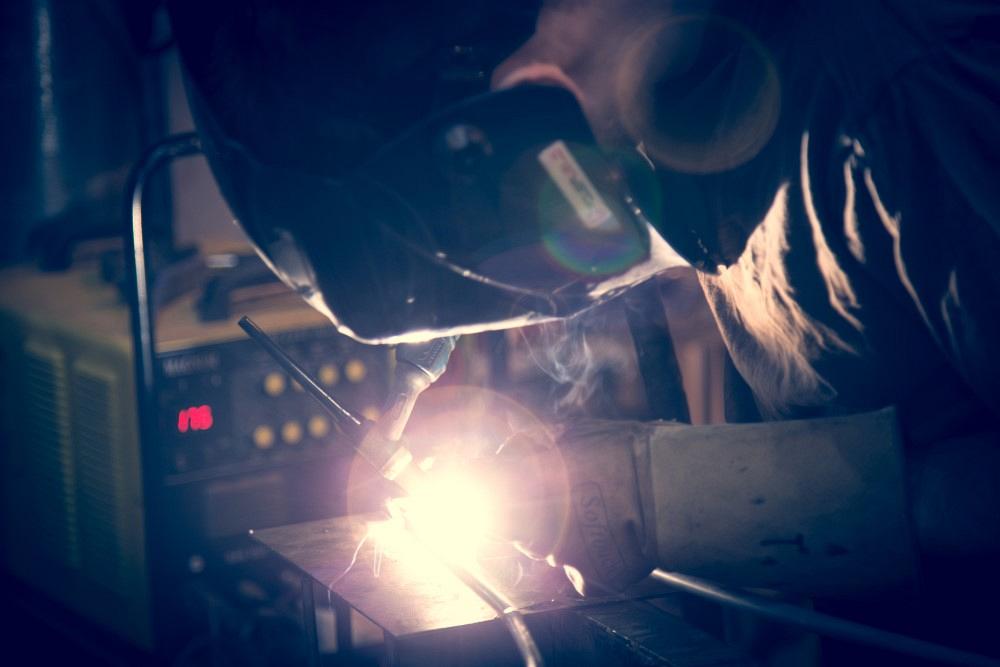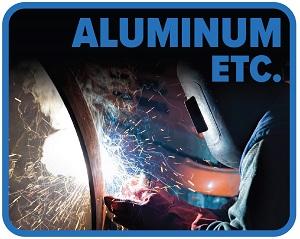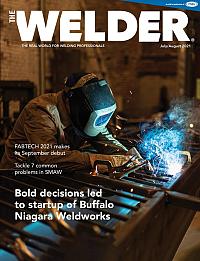Industrial Systems and Manufacturing Instructor
- FMA
- The Fabricator
- FABTECH
- Canadian Metalworking
Categories
- Additive Manufacturing
- Aluminum Welding
- Arc Welding
- Assembly and Joining
- Automation and Robotics
- Bending and Forming
- Consumables
- Cutting and Weld Prep
- Electric Vehicles
- En Español
- Finishing
- Hydroforming
- Laser Cutting
- Laser Welding
- Machining
- Manufacturing Software
- Materials Handling
- Metals/Materials
- Oxyfuel Cutting
- Plasma Cutting
- Power Tools
- Punching and Other Holemaking
- Roll Forming
- Safety
- Sawing
- Shearing
- Shop Management
- Testing and Measuring
- Tube and Pipe Fabrication
- Tube and Pipe Production
- Waterjet Cutting
Industry Directory
Webcasts
Podcasts
FAB 40
Advertise
Subscribe
Account Login
Search
Aluminum Etc.: Temperature control in welding aluminum is key
Having complete control of the heat input, can help welders regulate problems
- By Gina Cutts
- August 28, 2021
- Article
- Aluminum Welding

Aluminum requires a lot of heat—almost twice as much as steel—to raise its temperature enough to get a puddle. Being able to control heat is the key to successful aluminum welding. Getty Images
If you are embarking on an aluminum project but your comfort zone is working with steel, you’ll quickly realize that everything you know about welding steel successfully will not work when applied to aluminum. It can be very frustrating until you understand some of the main differences between the two materials.
Aluminum requires a lot of heat—almost twice as much as steel—to raise its temperature enough to get a puddle. It has one of the highest thermal conductivity rates. Even though aluminum can take a lot of heat and still remain a solid, that doesn’t mean you should crank up the voltage and hope for the best when welding. You need to follow a set of parameters to achieve the desired results.
Heat and Temperature Control in Welding Aluminum
An easy way to dial in your machine is to increase or decrease the voltage by 5 until you get a shiny-wet puddle within three seconds. If you achieve a puddle in one or two seconds, decrease your voltage by 5 until it happens within three seconds. No puddle within three seconds? Increase the voltage by 5 until you do.
At the beginning of your TIG weld, you’ll need to push down fully on the foot pedal to generate enough heat, but as you start to make your fusion, you’ll need to back off the foot pedal by as much as half. Watching your bead profile will give you visual indications of how much foot pedal pressure you’ll need. If you are using scratch-start (stick welding), you will have to allow the material some time to heat up at the beginning of the weld before you are able to fuse it successfully.
When I am teaching someone, I explain it by saying they need the lowest voltage setting that gives them the best working temperature. Too much heat will likely cause cracking in the weld, oxide inclusion, softening of the heat-affected zone, and porosity—all of which degrade your material and affect the quality of your weld, both structurally and cosmetically.
By having complete control of the heat input, you can regulate and hopefully eliminate these common problems.
About the Author

About the Publication
subscribe now

The Welder, formerly known as Practical Welding Today, is a showcase of the real people who make the products we use and work with every day. This magazine has served the welding community in North America well for more than 20 years.
start your free subscription- Stay connected from anywhere

Easily access valuable industry resources now with full access to the digital edition of The Fabricator.

Easily access valuable industry resources now with full access to the digital edition of The Welder.

Easily access valuable industry resources now with full access to the digital edition of The Tube and Pipe Journal.
- Podcasting
- Podcast:
- The Fabricator Podcast
- Published:
- 04/16/2024
- Running Time:
- 63:29
In this episode of The Fabricator Podcast, Caleb Chamberlain, co-founder and CEO of OSH Cut, discusses his company’s...
- Trending Articles
Sheffield Forgemasters makes global leap in welding technology

ESAB unveils Texas facility renovation

Engine-driven welding machines include integrated air compressors

The impact of sine and square waves in aluminum AC welding, Part I

How welders can stay safe during grinding

- Industry Events
16th Annual Safety Conference
- April 30 - May 1, 2024
- Elgin,
Pipe and Tube Conference
- May 21 - 22, 2024
- Omaha, NE
World-Class Roll Forming Workshop
- June 5 - 6, 2024
- Louisville, KY
Advanced Laser Application Workshop
- June 25 - 27, 2024
- Novi, MI



























